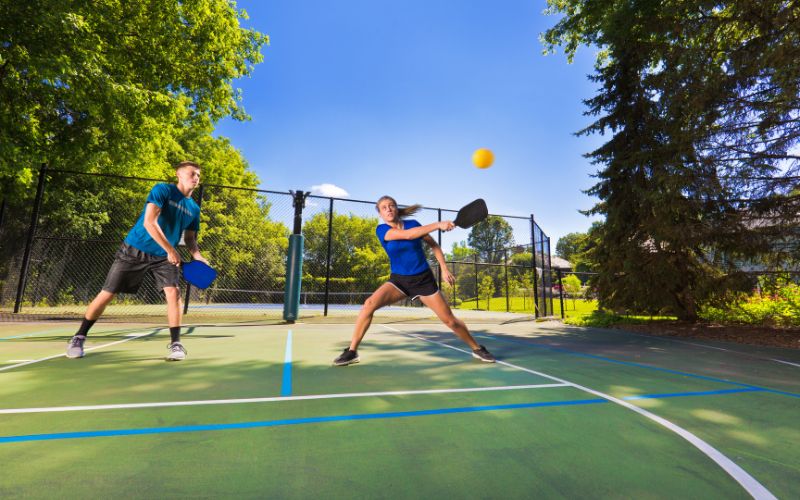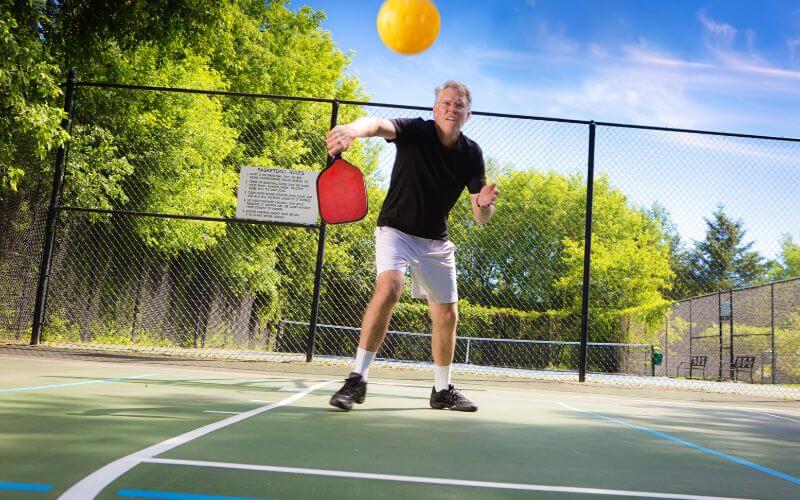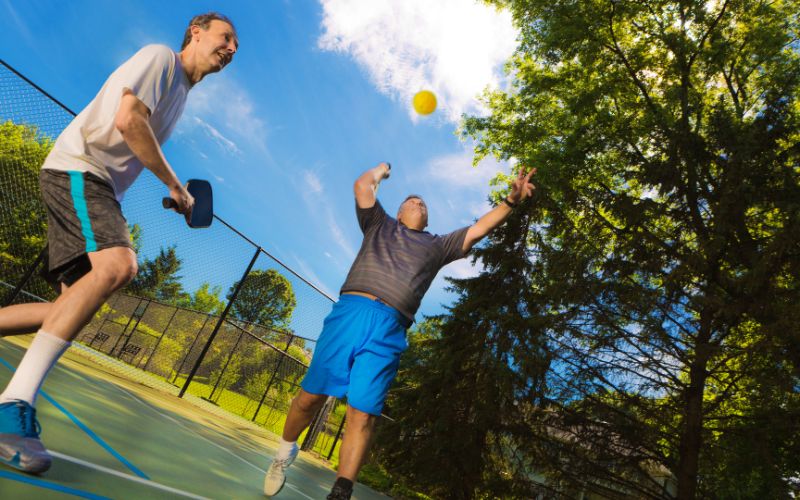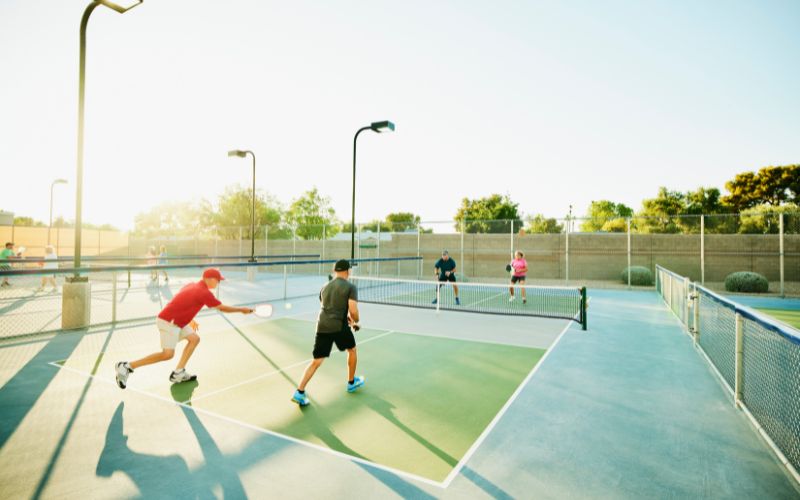Pickleball, a sport that blends elements of tennis, badminton, and ping-pong, has taken the recreational and competitive world by storm. With its fast-paced gameplay and accessibility to players of all ages, pickleball has become a favorite pastime for millions worldwide. Central to mastering pickleball is understanding the significance of each shot and its strategic implications. Among the myriad of shots in pickleball, one stands out as the most important shot – the third shot drop.
Understanding the Dynamics of Pickleball Shots
In the realm of pickleball, where precision and finesse reign supreme, the choice and execution of shots can determine the outcome of a match. Let’s delve into the intricacies of various shots and why the third shot drop holds a pivotal position in the game.
The Basics: Essential Pickleball Shots
Before delving into the specifics of the third shot drop, it’s crucial to grasp the fundamentals of pickleball shots. These include:
- Serve: Initiates each point and sets the tone for the rally.
- Groundstrokes: Forehand and backhand shots used to return balls hit to the player’s side.
- Volleys: Shots hit before the ball bounces on the player’s side of the court.
- Dinks: Soft shots hit close to the net to initiate or maintain a soft game.
Exploring Effective Pickleball Shots
There are various effective shots in pickleball that players can utilize to gain an advantage over their opponents. These shots include:
- Third Shot Drops
- Lob Shots
- Dink Shots
- Block Shots
- Backhand Spin Dinks
- Around the Post Shots
Each of these shots serves a unique purpose and can be employed strategically based on the game situation and opponent’s positioning.
1. Third Shot Drops
Definition: The third shot drop is a strategic shot played by the serving team after the return of serve. It involves hitting the ball softly and with backspin, aiming to land it in the opponent’s non-volley zone close to the net.
Significance:
- Initiates Offense: The third shot drop allows the serving team to transition from defense to offense by regaining control of the point.
- Neutralizes Opponent’s Advantage: By landing the ball softly in the non-volley zone, the serving team prevents the opponent from executing aggressive net play.
- Sets Up Dink Game: A well-executed third shot drop often initiates a dinking rally near the net, where finesse and accuracy become paramount.
Execution: To execute a third shot drop effectively:
- Soft Grip: Maintain a relaxed grip on the paddle to facilitate delicate touch and control.
- Slice Motion: Use a slicing motion to impart backspin on the ball, causing it to land softly and bounce low.
- Target Placement: Aim to place the ball close to the kitchen line in the opponent’s non-volley zone, making it challenging for the opponent to attack.
2. Lob Shots
Definition: A lob shot in pickleball involves hitting the ball high and deep into the opponent’s court, usually as a defensive or counter-attacking strategy.
Significance:
- Resetting the Point: Lob shots are effective in resetting the point and gaining time to reposition on the court.
- Countering Net Play: Against opponents positioned at the net, lob shots can be used to exploit gaps in their defense and force them to retreat.
Execution: Key elements of executing a lob shot include:
- Lofted Stroke: Employ a lofted stroke to impart height and distance to the ball.
- Judicious Placement: Aim for the back of the opponent’s court, ensuring the ball lands deep and forces them to move backward.
- Timing: Execute the lob shot when the opponent is close to the net or off balance to maximize its effectiveness.
3. Dink Shots
Definition: Dink shots are soft, controlled shots played close to the net, intended to keep the ball low and force opponents into a delicate, finesse-oriented exchange.
Significance:
- Initiating Dinking Rallies: Dink shots are instrumental in initiating and maintaining dinking rallies, where precision and touch are paramount.
- Forcing Errors: Well-placed dink shots can force opponents into errors or weak responses, allowing the initiating team to seize control of the point.
Execution: To execute dink shots effectively:
- Soft Touch: Utilize a soft touch on the paddle to control the pace and trajectory of the ball.
- Angle Placement: Aim to place the ball close to the net and at acute angles, making it challenging for opponents to reach and return.
- Consistency: Focus on consistency and placement rather than power when executing dink shots, as accuracy is key to their success.
4. Block Shots
Definition: Block shots in pickleball involve deflecting hard-hit balls from opponents, usually from a defensive position near the net.
Significance:
- Defensive Strategy: Block shots serve as a defensive strategy to neutralize aggressive shots from opponents and regain control of the point.
- Maintaining Position: By blocking hard-hit balls, players can maintain their position at the net and prevent opponents from gaining a positional advantage.
Execution: Key considerations for executing block shots include:
- Solid Contact: Make solid contact with the ball using a stable paddle position to absorb the impact of the shot.
- Controlled Deflection: Aim to deflect the ball with controlled force, directing it back into the opponent’s court with accuracy.
- Anticipation: Anticipate the opponent’s shot trajectory and adjust positioning accordingly to execute effective block shots.
5. Backhand Spin Dinks
Definition: Backhand spin dinks involve applying spin and finesse to backhand shots played close to the net, often used to create angles and force errors from opponents.
Significance:
- Angle Creation: Backhand spin dinks enable players to create acute angles and exploit gaps in the opponent’s defense, increasing the likelihood of a successful shot.
- Controlled Placement: With proper spin and finesse, backhand spin dinks can be placed precisely in areas that are difficult for opponents to reach and return.
Execution: To execute backhand spin dinks effectively:
- Spin Generation: Focus on generating spin by brushing the paddle against the ball at an angle, imparting sideways rotation.
- Angle Selection: Choose the appropriate angle to direct the ball, considering the positioning of opponents and court geometry.
- Follow-through: Maintain a smooth follow-through motion after striking the ball, ensuring accuracy and control over the shot.
6. Around the Post Shots
Definition: Around the post shots, also known as ATP shots, involve hitting the ball around the net post from an extreme angle, usually played from a wide position on the court.
Significance:
- Creating Spectacular Winners: Around the post shots are considered some of the most spectacular shots in pickleball, capable of surprising opponents and spectators alike.
- Angle and Precision: Successful execution of around the post shots requires exceptional angle selection and precision, making them challenging to defend against.
Execution: Key elements of executing around the post shots include:
- Extreme Angles: Position yourself wide on the court to create the necessary angle for the shot.
- Timing and Contact: Time the shot to perfection, making contact with the ball at the optimal moment to direct it around the net post.
- Risk and Reward: Recognize the risk associated with around the post shots and use them judiciously in situations where the potential reward outweighs the risk.
The Significance of the Third Shot Drop
Defining the Third Shot Drop
The third shot drop refers to a soft shot played from behind the baseline aimed at landing softly in the opponent’s non-volley zone. It is typically employed by the serving team after the return of serve to regain control of the point.
Strategic Importance
The third shot drop holds paramount importance in pickleball for several reasons:
- Control and Placement: Unlike power shots, the third shot drop emphasizes control and precise ball placement.
- Initiating the Dink Game: A well-executed third shot drop forces the opponent to hit a soft shot or dink, thus initiating a dinking rally where finesse and accuracy play a crucial role.
- Neutralizing Opponent’s Advantage: By landing the ball softly in the opponent’s non-volley zone, the serving team neutralizes the opponent’s advantage and prevents aggressive net play.
Mastering the Technique
Executing the third shot drop requires finesse and touch. Here’s how to master the technique:
- Soft Grip: Adopt a soft grip on the paddle to facilitate delicate touch and control.
- Slice Motion: Use a slicing motion to impart backspin on the ball, causing it to land softly and bounce low.
- Clearing the Net: Aim to clear the net with a low trajectory to minimize the opponent’s response options.
- Placement: Target the opponent’s non-volley zone, ideally landing the ball close to the kitchen line to limit their ability to attack.
Strategic Implementation and Variations
Incorporating the Third Shot Drop Into Your Game
To integrate the third shot drop effectively into your gameplay, consider the following strategies:
- Timing: Execute the third shot drop promptly after the return of serve to maintain control of the point.
- Variability: Vary the placement and spin of your third shot drops to keep opponents guessing and prevent predictability.
- Setting Up Offense: Use the third shot drop as a setup shot to transition from defense to offense, allowing your team to gain positional advantage at the net.
Exploring Variations and Alternatives
While the third shot drop is the most important shot in pickleball, players should also be proficient in other shots to diversify their gameplay and keep opponents off balance. Some notable variations and alternatives include:
- Lob Shots: Used to counter aggressive net play and reset the point.
- Powerful Cross-Court Shots: Employed to catch opponents off guard and gain a positional advantage.
- Dink Shots: Ideal for engaging in soft, controlled rallies near the net.
- Block Shots: Defensive shots used to deflect hard-hit balls and regain control of the point.
Conclusion
In the dynamic world of pickleball, mastering the art of shot selection and execution is essential for success on the court. While various shots play significant roles in shaping the outcome of a match, the third shot drop stands out as the most important shot due to its strategic implications and ability to dictate the flow of play. By honing your skills in executing the third shot drop and understanding its nuances, you can elevate your pickleball game to new heights and outmaneuver opponents with finesse and precision.
FAQs: Mastering the Third Shot Drop in Pickleball
1. Why is the third shot drop considered the most important shot in pickleball?
The third shot drop is pivotal because it allows the serving team to transition from defense to offense, neutralizes the opponent’s advantage, and sets up dinking rallies near the net. Its strategic importance lies in its ability to control the pace of the game and dictate the flow of play.
2. How can I improve my execution of the third shot drop?
To execute the third shot drop effectively, focus on maintaining a soft grip on the paddle, using a slicing motion to impart backspin on the ball, and targeting precise placement in the opponent’s non-volley zone. Practice consistency and accuracy to master this crucial shot in pickleball.
3. Are there any variations or alternatives to the third shot drop?
While the third shot drop is essential, players should also be proficient in other shots to diversify their gameplay. Alternatives include lob shots, powerful cross-court shots, dink shots, and block shots, each serving different strategic purposes depending on the game situation and opponent’s positioning.
4. How can I incorporate the third shot drop into my overall strategy?
Integrate the third shot drop strategically by timing its execution promptly after the return of serve, varying its placement and spin to keep opponents guessing, and using it as a setup shot to transition from defense to offense. By incorporating the third shot drop effectively, you can gain a positional advantage and control the tempo of the game.
5. What are some common mistakes to avoid when executing the third shot drop?
Common mistakes when executing the third shot drop include hitting the ball too hard, failing to impart sufficient backspin, and targeting incorrect placement in the opponent’s non-volley zone. Avoiding these mistakes requires practice, focus on technique, and awareness of the game situation to execute the third shot drop with precision and finesse.





